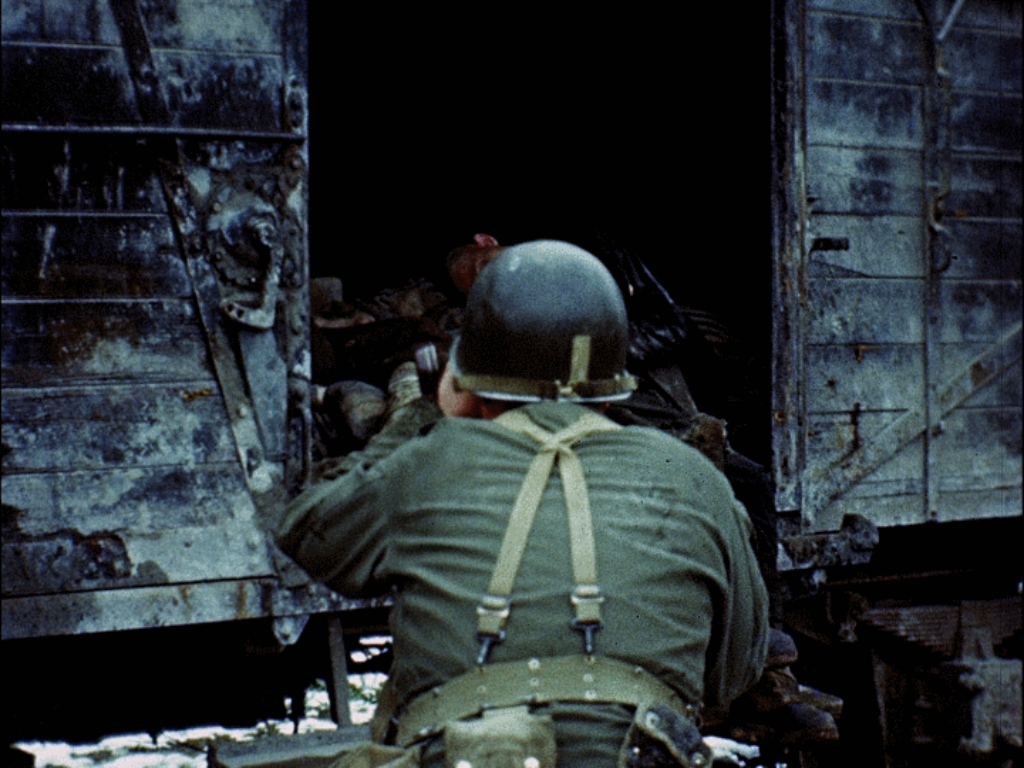Visual History of the Holocaust: Rethinking Curation in the Digital Age
17.08.2021
Mauthausen Memorial is Project Partner in the Horizon 2020 Project:
"Visual History of the Holocaust: Rethinking Curation in the Digital Age"

Combining state-of-the-art concepts and practices from information sciences, museum pedagogy and digital storytelling, this project develops a new approach for the engagement with the Holocaust and its visual evidence in an age when digital technologies and the internet have profoundly transformed our concept of history.
“Visual History of the Holocaust: Rethinking Curation in the Digital Age” (VHH) is an innovation action funded by the European Commission’s Horizon 2020 programme with € 5 million. It commenced on January 1, 2019 and will continue until December 31, 2022.
The Vision
The project focuses on filmic records produced by Allied forces and relating to the discovery of Nazi concentration camps and other atrocity sites. Although these films only capture a certain aspect of the Holocaust, some of their images have become canonical. Due to the scarcity of visual records a few images, often presented out of context, have shaped our collective imaginary of the Holocaust. In the course of the project these historical films, which currently are dispersed across archival institutions in the United States, the United Kingdom, Russia and other former Soviet Republics, are aggregated, digitized, analyzed and annotated. The film images are linked dynamically with photographs, text-based documents and oral histories, as well as with images from subsequent visual representations of the Holocaust.
Using existing and emerging technologies, including advanced digitization, automated analysis of images and text, time-based annotation and location-based services, the project provides tools to trace these images and explore how they have been used and reused. It develops strategies to discover and unlock layers of context and meaning inaccessible through traditional linear narrative modes.
The tool kits, best-practice models, applications, and the web platform created in the course of the project address a broad range of users, including both professionals and the interested public: film and media scholars, historians, archivists, information scientists, curators, educators, media producers, artists, visitors of memorial sites, and all engaged citizens. Empowering people to explore the mediality of history and memory by means of digital technologies is the vision of the project.
The role of Mauthausen Memorial in the Project
With its expertise in curating offline as well as online exhibitions (e.g. “Virtual Room of Names”), the Mauthausen Memorial contributes to the conception, testing and evaluation of the location-based engagement level of the VHH-MMSI. On-site trials with different visitor groups and especially their feedback in regard to the enhancement of the spatial experience are used to improve the usability and the overall user experience of the system. Based on its own collections and the expert knowledge of its staff, the Memorial also supports the research, collection, cataloguing and annotation of film, photo, and text documents in the project.
The Consortium
To build the project’s new understanding of digital curation, an international consortium was founded. It comprises 12 Austrian, German, Israeli and French research institutions, museums, memorial sites as well as technology developers, and is supported by associated partners in Europe and the United States.
- Ludwig Boltzmann Institute for Digital History (Ludwig Boltzmann Gesellschaft) (AT): Coordinator
- Austrian Film Museum (AT): Co-Coordinator
- TU Wien (AT)
- Justus Liebig University Giessen (DE)
- The Hebrew University of Jerusalem (IL)
- University of Bremen (DE)
- Center for Russian, Central European and Caucasian Studies (Centre National de la Recherche Scientifique) (FR)
- Dachau Concentration Camp Memorial Site (Stiftung Bayerische Gedenkstätten) (DE)
- Bergen-Belsen Memorial (Stiftung niedersächsische Gedenkstätten) (DE)
- Mauthausen Memorial (AT)
- Deutsches Filminstitut & Filmmuseum (DE)
- max.recall information systems GmbH (AT)
Associated Partners
- National Archives and Records Administration (USA)
- United States Holocaust Memorial Museum (USA)
- Fritz Bauer Institut (DE)
Project Website
This project has received funding from the European Union's Horizon 2020 research and innovation programme under grant agreement No 822670.
Photo credit: Camera operator of the U.S. Army Signal Corps at Dachau, May 1945 [World War II color footage], George Stevens / Library of Congress